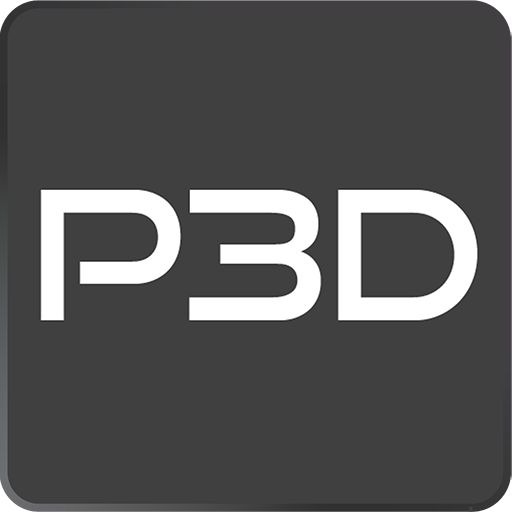.P3D File Extension

Peak3D 3D Graphics File
| Developer | PeakWork |
| Popularity | |
| Category | 3D Image Files |
| Format | .P3D |
| Cross Platform | Update Soon |
What is an P3D file?
Files with the .P3D extension are a fascinating breed in the digital world, often associated with 3D graphics and virtual environments.
The ‘P3D’ nomenclature suggests a connection to the third dimension, indicating a profound role in rendering three-dimensional spaces.
More Information.
The .P3D file was initially conceived as a container for 3D models and associated data. As technology advanced, its usage expanded beyond gaming and design into fields like simulation, training, and virtual walkthroughs. The file type became synonymous with efficiency in handling complex 3D information.
Origin Of This File.
The roots of the .P3D file can be traced back to the evolution of computer graphics and the demand for immersive experiences. Emerging alongside the rise of virtual reality and 3D modeling, the .P3D file found its niche in various applications, from gaming to architectural design.
File Structure Technical Specification.
At its core, the .P3D file is structured to store geometric and textural data, along with metadata defining how the 3D model should be rendered.
The technical specifications may vary, but a typical .P3D file includes information about vertices, textures, lighting, and animations. Its adaptability makes it a preferred choice for diverse applications.
How to Convert the File?
1. Windows:
Method 1: Using 3D Modeling Software
Step 1: Open your preferred 3D modeling software on Windows (e.g., Blender, 3ds Max, or Maya).
Step 2: Navigate to the “File” menu and select “Open” or “Import.”
Step 3: Choose the .P3D file from your storage and click “Open” to import it.
Step 4: Once the file is loaded, you may need to adjust settings or configurations based on the software used.
Step 5: Save or export the file in your desired format using the “Save” or “Export” option in the software.
Method 2: Using a Dedicated Viewer
Step 1: Download and install a .P3D file viewer compatible with Windows (e.g., P3D Viewer).
Step 2: Open the viewer and navigate to the “File” menu.
Step 3: Select “Open” and browse to the location of your .P3D file.
Step 4: The viewer will render the 3D model, and you may have options to export or save the model in different formats.
2. Linux:
Using Open-Source 3D Tools
Step 1: Launch a 3D modeling application that is compatible with .P3D files (e.g., Blender).
Step 2: Access the “File” menu and choose “Import” or “Open.”
Step 3: Locate the .P3D file and select “Open.”
Step 4: Adjust any necessary settings and configurations within the software.
Step 5: Save or export the file in your desired format using the available options.
3. Mac:
Utilizing Mac-Compatible Software
Step 1: Open a 3D modeling application that supports .P3D files (e.g., Blender, AutoCAD, or SketchUp).
Step 2: Navigate to the “File” menu and select “Open” or “Import.”
Step 3: Locate and open the .P3D file.
Step 4: Make any adjustments or modifications as needed.
Step 5: Save or export the file in a different format using the options provided by the software.
4. Android:
Using a Mobile 3D Viewer App
Step 1: Go to the Google Play Store and download a .P3D file viewer app (e.g., P3D Viewer for Android).
Step 2: Open the app and look for an option to open or import files.
Step 3: Locate the .P3D file on your device and select it.
Step 4: The app will display the 3D model, and you might have the option to export or share it in various formats.
5. iOS:
Exploring 3D Models on Apple Devices
Step 1: Visit the App Store and download a .P3D file viewer app (e.g., P3D Viewer for iOS).
Step 2: Open the app and find the option to import or open files.
Step 3: Locate the .P3D file on your iOS device and select it.
Step 4: The app will render the 3D model, and you may have options to export or share it in different formats.
Advantages And Disadvantages.
Advantages:
- Efficiency: .P3D files are optimized for quick rendering, ensuring smooth experiences in real-time applications.
- Versatility: They support a range of features, including textures, animations, and lighting, making them suitable for various purposes.
- Compact Size: Despite their richness in content, .P3D files often maintain a manageable file size, aiding in storage and transmission.
Disadvantages:
- Compatibility: Some applications or platforms may struggle to fully support the .P3D format, leading to potential issues in rendering.
- Learning Curve: Creating or manipulating .P3D files may require a learning curve due to the complexity of 3D modeling and rendering.
How to Open P3D?
Open In Windows
Windows users can leverage compatible 3D modeling software or specialized viewers to open .P3D files. The Windows operating system provides a seamless environment for exploring the three-dimensional wonders encapsulated within these files.
Open In Linux
Linux enthusiasts need not fret; there are open-source solutions and compatible applications available for exploring .P3D files. Leveraging the vibrant Linux community and their commitment to diverse file support ensures a rich 3D experience.
Open In MAC
Macs, with their robust graphics capabilities, offer a splendid environment for opening and exploring .P3D files. Utilizing Mac-compatible 3D modeling software or dedicated viewers brings the three-dimensional magic to life on Apple devices.
Open In Android
For the on-the-go experience, Android users can explore .P3D files using specialized apps available on the Google Play Store. These apps provide an immersive journey into the world of 3D, right from the convenience of handheld devices.
Open In IOS
Apple’s iOS ecosystem also caters to 3D enthusiasts. Dedicated applications on the App Store enable users to open and interact with .P3D files seamlessly, extending the immersive experience to iPhones and iPads.
Open in Others
Beyond the mainstream operating systems, there are niche platforms and emerging technologies that support .P3D files.
Whether it’s through web-based viewers or specialized applications, the versatility of .P3D ensures that its wonders can be unlocked across a spectrum of devices and environments.












